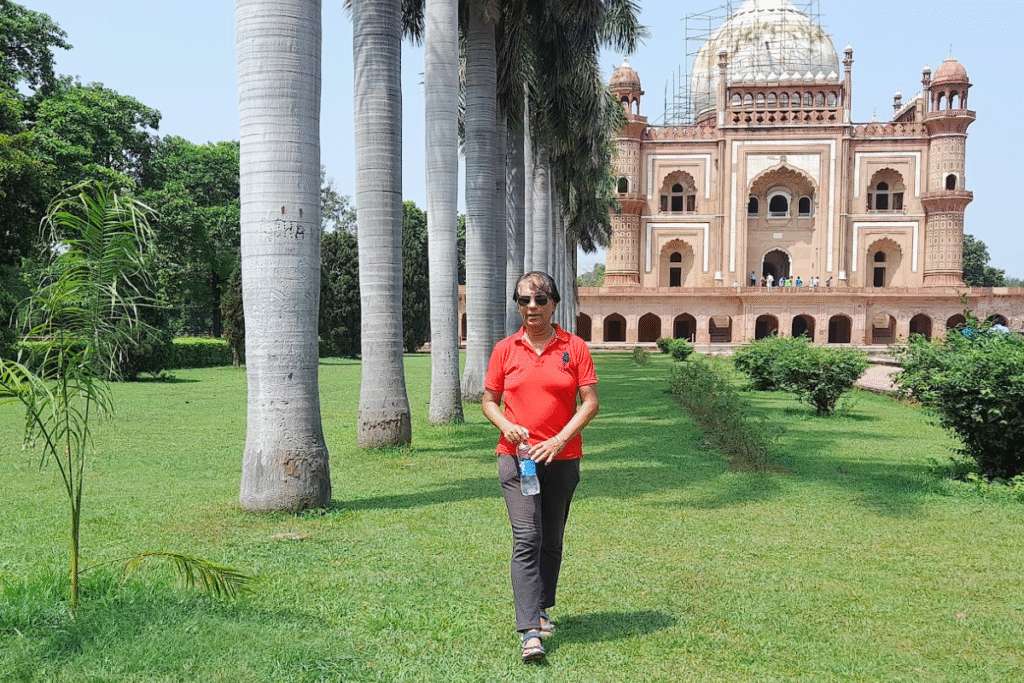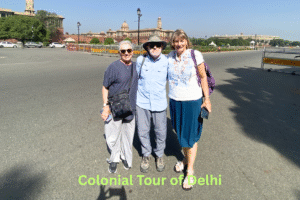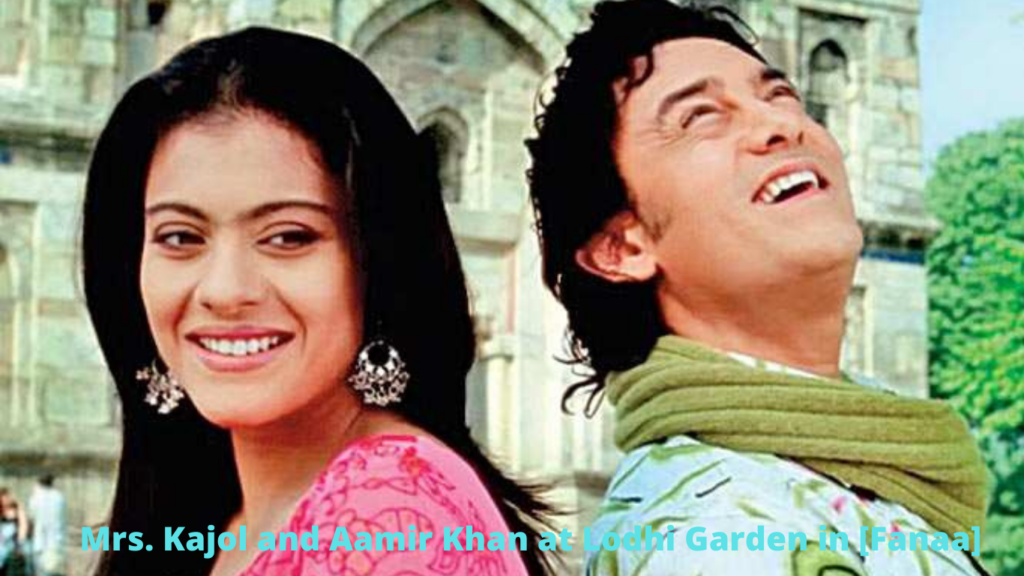Nestled in the heart of Delhi’s Lutyens Zone, near the serene Lodhi Garden, stands a magnificent relic of Mughal grandeur – the Safdarjung Tomb. Built in 1754 by Nawab Shuja-ud-Daula as a tribute to his father, Safdarjung, this tomb is a testament to the architectural brilliance and royal elegance of the late Mughal era. Every corner, every stone, and every pathway whispers tales of power, romance, and artistry from a bygone age.
Whether you are a history lover, Delhi heritage tourist, or photography enthusiast, a visit to Safdarjung Tomb promises an immersive journey into the Mughal legacy. From the carefully laid charbagh gardens to the majestic dome and intricate façades, every detail is a reflection of Mughal architecture in Delhi

The Fascinating History of Safdarjung Tomb
The story of Safdarjung begins far from Delhi, in Persian lands, where Abul Mansur Mirza Muhammad Muqim Ali Khan, later known as Safdarjung, was born in 1708. A descendant of the Kara Koyunlu dynasty, he migrated to India in 1722, gradually rising to prominence under the Mughal Empire. By 1748, Safdarjung had become the Wazir ul-Mamalik-i-Hindustan (Prime Minister of India) under Emperor Ahmad Shah Bahadur. His political journey was marked by power, influence, and, eventually, exile – all of which shaped his legacy.
After his death on October 5, 1754, Safdarjung’s son, Nawab Shuja-ud-Daula, sought to honor his father with a mausoleum in Delhi. The result was the creation of Safdarjung Tomb, a structure blending the grandeur of Mughal imperial style with a distinct, independent architectural identity. Often compared to Humayun’s Tomb, it incorporates a central dome, octagonal cenotaphs, and the iconic charbagh garden layout, offering a serene space for reflection amidst history.
See: Humayun’s Tomb History Architecture Timing Guide
Safdarjung Tomb Architecture – A Mughal Masterpiece
Mughal Majesty in Design
The Safdarjung Tomb architecture reflects the classical Mughal garden tomb style. Designed by the Ethiopian architect Bilal Muhammad Khan, the mausoleum was constructed at a cost of 325 lakh rupees, marking it as the last grand garden tomb of the Mughal era. The design incorporates red and brownish-yellow sandstone, with white marble elements sourced from earlier monuments.
Safdarjung Tomb The Gardens and Charbagh Layout
The tomb sits on an elevated platform, overlooking a sprawling square garden divided into four symmetrical sections by water channels and walkways. The charbagh style symbolizes paradise, providing both aesthetic beauty and spiritual calm for visitors. Within these gardens, you’ll also find a three-domed mosque and protective walls that define the sacred complex.
Grand Entrance and Facades of Safdarjung Tomb
The two-story main gate welcomes visitors with regal ornamentation and an Arabic inscription that reads:
“When the hero of plain bravery departs from the transitory, may he become a resident of God’s paradise.”
Inside, the tomb’s central dome dominates the view, and polygonal towers at each corner lend grandeur to the symmetrical layout. The main mausoleum spans 28 meters square, housing an octagonal cenotaph decorated with rococo plaster motifs. Beneath the structure, the underground chamber holds the remains of Safdarjung and his wife, Amat Jahan Begum.
Safdarjung Tomb Visit– Timings & Tickets
- Timings: 9:00 AM – 5:00 PM daily
- Entry Fee: ₹30 for Indians, ₹500 for foreign tourists
- Best Time to Visit: October to March for pleasant weather and photography opportunities
Visitors are advised to wear comfortable footwear and carry water, as exploring the extensive gardens and intricate pathways can take 1–2 hours for a complete experience.
Best Old & New Delhi Tours with a Delhi Expert
Safdarjung Tomb How to Reach – Metro & Travel Tips
By Metro:
- The nearest metro station is Jor Bagh on the Yellow Line, just a short auto-rickshaw or cab ride away.
- Alternatively, INA Metro Station is within reasonable distance for those coming from other parts of Delhi.
By Road:
- Safdarjung Tomb is easily accessible via taxi, Uber/Ola, or private car, with parking available nearby.
- For those on a heritage walk, the tomb can also be included in a Delhi historical tour with stops at nearby monuments like Lodhi Garden, Humayun’s Tomb, and India Gate.
See: Couple Friendly Places in Delhi
Tips for First-Time Visitors

- Photography: Capture the central dome and the symmetrical gardens from the elevated platform for stunning images.
- Guided Tour: Hiring a knowledgeable Delhi tour guide can enhance the experience with stories of Mughal history, architecture, and Safdarjung’s political legacy.
- Nearby Attractions: Pair your visit with Lodhi Garden for a relaxing walk, or explore Humayun’s Tomb for another Mughal architectural marvel.
Why Visit Safdarjung Tomb
- Witness the last grand Mughal garden tomb, representing the transition period of the empire.
- Immerse yourself in the Mughal architectural elegance with symmetrical gardens, ornate domes, and detailed facades.
- Experience a peaceful and reflective environment amid the bustling city of Delhi.
- Learn about Safdarjung’s life, Persian heritage, and role in Mughal politics, making the visit both educational and inspiring.
Conclusion
A visit to Safdarjung Tomb Delhi is more than sightseeing; it is a journey through time, an intimate glimpse into the final days of Mughal architectural grandeur. From the serene charbagh gardens to the intricate rococo plaster decorations, each element tells a story of ambition, artistry, and legacy. Whether you are a history enthusiast, a photography lover, or a cultural traveler, Safdarjung Tomb promises an unforgettable experience in the heart of Delhi’s heritage trail.
Plan your visit, explore the tomb’s serene gardens, and step into the world of Mughal majesty with every corner whispering tales from the past.
See: Taj Mahal Architecture History
Safdarjung Tomb A Lasting Impressions by an Ethiopian Hand
Designed by an Ethiopian architect, It was built by Bilal Muhammad Khan, at the cost of three hundred twenty five lacs of rupees. the Safdarjung Tomb stands as the final colossal garden tomb of the Mughal era. Although aligned with the renowned Humayun’s Tomb, this structure emanates its own aura, leaving a unique mark on history.







